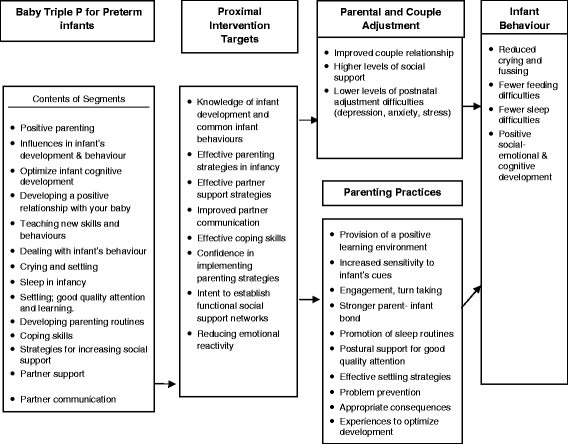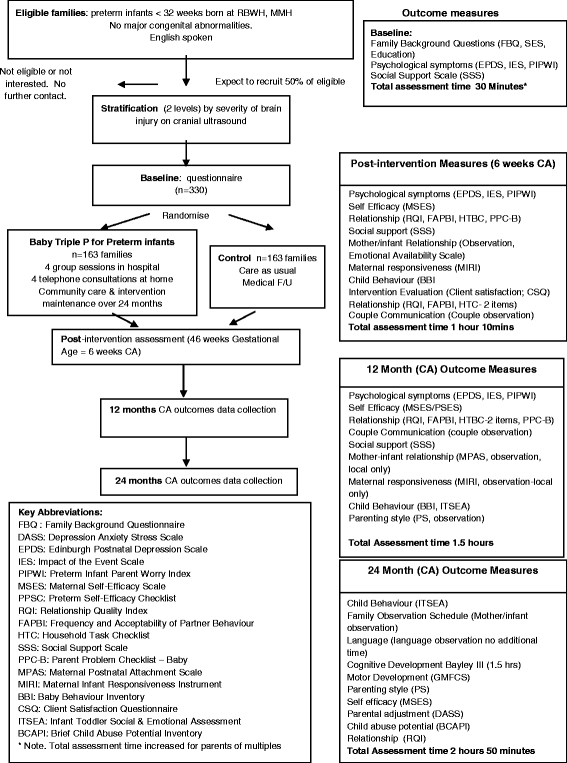Prem Baby Triple P: a randomised controlled trial of enhanced parenting capacity to improve developmental outcomes in preterm infants
- PMID: 25884634
- PMCID: PMC4363360
- DOI: 10.1186/s12887-015-0331-x
Prem Baby Triple P: a randomised controlled trial of enhanced parenting capacity to improve developmental outcomes in preterm infants
Abstract
Background: Very preterm birth (<32 weeks gestation) is associated with motor, cognitive, behavioural and educational problems in children and maternal depression and withdrawal. Early interventions that target parenting have the greatest potential to create sustained effects on child development and parental psychopathology. Triple P (Positive Parenting Program) has shown positive effects on child behaviour and adjustment, parenting practices and family functioning. Baby Triple P for Preterm infants, has been developed to target parents of very preterm infants. This study tests the effectiveness of Baby Triple P for Preterm infants in improving child and parent/couple outcomes at 24 months corrected age (CA).
Methods/design: Families will be randomised to receive either Baby Triple P for Preterm infants or Care as Usual (CAU). Baby Triple P for Preterm infants involves 4 × 2 hr group sessions at the hospital plus 4 × 30 min telephone consultations soon after transfer (42 weeks C.A.). After discharge participants will be linked to community based Triple P and intervention maintenance up to 24 months C.A. Assessments will be: baseline, post-intervention (6 weeks C.A.), at 12 and 24 months C.A. The primary outcome measure is the Infant Toddler Social & Emotional Assessment (ITSEA) at 24 months C.A. Child behavioural and emotional problems will be coded using the mother-toddler version of the Family Observation Schedule at 24 months C.A. Secondary outcome will be the Bayley Scales of Infant and Toddler Development (BSID III) cognitive development, language and motor abilities. Proximal targets of parenting style, parental self-efficacy, parental mental health, parental adjustment, parent-infant attachment, couple relationship satisfaction and couple communication will also be assessed. Our sample size based on the ITSEA, has 80% power, predicted effect size of 0.33 and an 85% retention rate, requires 165 families are required in each group (total sample of 330 families).
Discussion: This protocol presents the study design, methods and intervention to be analysed in a randomised trial of Baby Triple P for Preterm infants compared to Care as Usual (CAU) for families of very preterm infants. Publications of all outcomes will be published in peer reviewed journals according to CONSORT guidelines.
Trial registration: Australian New Zealand Clinical Trials Registry: ACTRN12612000194864.
Figures
References
-
- Chow SSW. Report of the Australian and New Zealand Neonatal Network 2012. Sydney: ANZNN; 2014.
Publication types
MeSH terms
Associated data
LinkOut - more resources
Full Text Sources
Other Literature Sources
Medical



